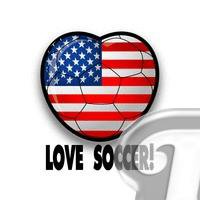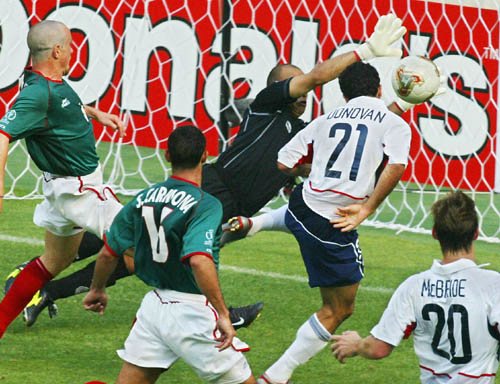An Overview of American Soccer History

The College Era, and Rules Consolidation, 1862-1875
The Working-Class and Immigrant Eras, 1875-1894
The First Dynasties, 1913-1921
The 1960's: The Birth of the American Soccer Renaissance
Outdoor soccer reaches a low: 1985
The Rebirth of Outdoor Soccer, 1988-1994
1994: The World Cup comes to America
From World Cup to Major League Soccer (1995-1996)

The Road to the World Cup
US Soccer officials had for a long time seen the hosting of a world cup in the united States as a last hope for establishing outdoor soccer in the country. The USSF had been promoting this idea for many years, most notably during the waning days of the NASL, when a serious bid for the 1986 World Cup was made, after the original host, Columbia was disqualified. This gambit nearly succeeded. The success of the NASL proved that a large fan base existed, as did the high numbers of Americans with strong ethnic ties to their ancestral countries. A natural fan base would exist not only for the American team, but also for many of the other teams that would most likely make the cut. The US was second to none in terms of infrastructure with an overabundance of large stadiums, albeit ones with less than ideal gridiron field configurations, many containing Astroturf fields. Despite these drawbacks, the US made it to the semifinalist stage, and it was felt they were rejected in favor of Columbia, primarily by skepticism about the US market, and the financial problems of the declining NASL. It was felt the World Cup would never sell in the US because of the lack of success at the professional level. Less than a year after the US lost their bid, the soccer competition at the 1984 Olympics in Los Angeles broke all records for the Olympic competition, making Soccer the most heavily attended competition in the entire Olympics. This despite an almost complete lack of coverage in the US media.
Another major problem hampering US efforts was the disarray of the National team. With a disappointing performance in the Olympics, the demise of the NASL, the disastrous 1986 World Cup qualifying performance, and a general lack of leadership, the National team almost became dormant in the mid 1980's, playing only two full internationals in 1986, and a mixed bag of games in 1987, starting with a disappointing 0-2 loss to Canada in their first Olympic qualifier, but finishing with a respectable performance in the Pan-American games. Clearly, the National team was in danger of becoming irrelevant if it continued to miss out on qualifying for major international tournaments, and it could not afford to continue in this manner.
The outdoor game achieved a modest revival after 1986. The Lone Star Soccer Alliance made its debut in 1987, with teams in Texas and nearby states, and the Western League continued its slow growth, extending down the west coast into California. These two leagues operated at a modest, basically division 3 level. A more ambitious effort was the third American Soccer League, which had as its goal the return of 1st division soccer in America. This league, operating along the east coast in major cities, was able to attract some of the more prominent American players, including a number on the National Team, and drew crowds comparable to the final years of the ASL II. Finally, another small, almost unnoticed event that would later become significant was the meeting of some western arena owners who, looking for a sport to keep their rinks open during the off-season, joined together under the leadership of Francisco Marcos to form the Southwest Indoor Soccer League. This low-level indoor league would grow in increments through the rest of the 20th century to become a major cornerstone of the entire US soccer structure by the end of the century.